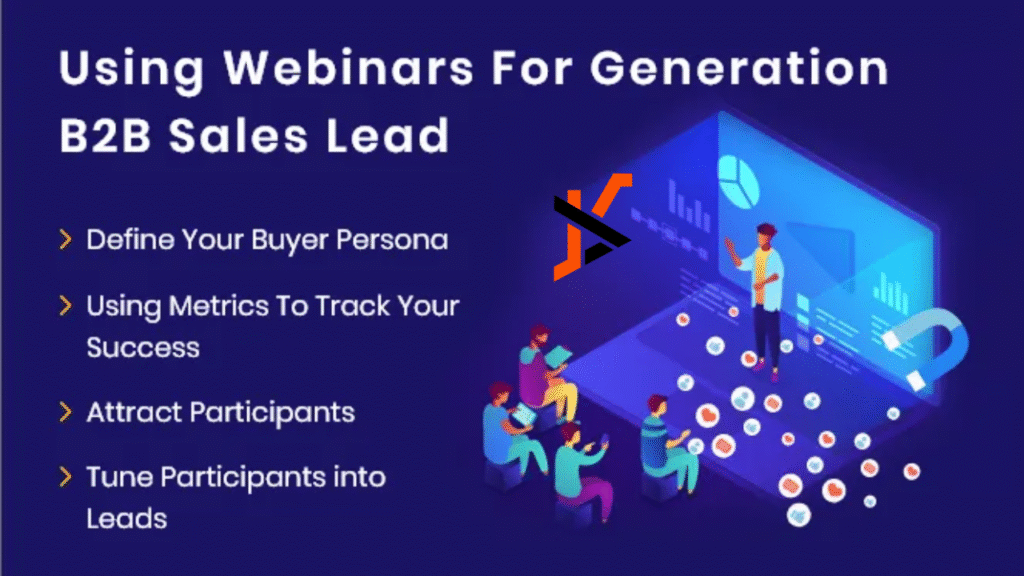For modern B2B marketers, webinars are far more than just virtual presentations, but are cornerstone tools for driving engagement, generating leads, and nurturing buyer relationships. But to turn webinars into revenue engines, you need more than off-the-shelf streaming software. A fully integrated and strategic webinar platform is now essential for delivering content that converts.
From launching a new product to hosting a thought leadership panel, webinars enable brands to engage prospects and clients in real time. When combined with audience intelligence and automation, they offer a seamless way to progress leads through the funnel with minimal friction.
Why a Robust Webinar Platform Matters
Choosing the right infrastructure determines whether your webinar strategy drives ROI or simply falls flat. A properly designed webinar platform ensures every interaction is intentional and actionable, supporting everything from registration to post-event follow-up.
For example, using a comprehensive webinar platform that allows for branded sessions, audience engagement tools, on-demand access, and CRM integration ensures your webinar remains effective beyond the live broadcast.
The right platform transforms your webinar from a one-off event into a measurable content asset. Important features to consider include:
- Scalable support for live and replay viewing
- Branded registration and session consoles
- Tools such as polls, Q&A and chat for live participant engagement
- Detailed analytics that feed directly into your sales and marketing systems
Webinars: Where B2B Buyers Are Engaging
Data confirms that webinars remain a top-performing content format for B2B marketers. According to recent insights from Content Marketing Institute, 62% of B2B marketers hosted a webinar in the past 12 months, and 47% considered webinars their best-performing asset, second only to in-person events.
Moreover, 67% of B2B buyers engaged with a webinar over the past year, with many spending between 30 and 60 minutes per session, longer than other formats, indicating deeper engagement and higher intent.
Influence Entire Buyer Journeys
Webinars play a versatile role across the B2B buyer journey:
- Awareness: Thought leadership sessions introduce your brand early.
- Consideration: Product demos and user stories help prospects evaluate fit.
- Decision: Live Q&A or walkthroughs address final concerns and bring clarity.
- Post-purchase: Training or onboarding webinars support retention and upsell.
Because your webinar data integrates directly with marketing automation and CRM tools, you can segment and target follow-up activity with unmatched precision. Engagement behaviour, such as poll participation or questions, allows sales teams to tailor outreach confidently.
Building Engagement That Resonates
Engagement is a leading indicator of intent. Webinars offer unique, real-time touchpoints that no static content can match. To maximise engagement, consider the following recommendations:
- Keep sessions concise and focused—around 45 minutes, with time for live interaction.
- Use varied voices—a host, a subject expert, perhaps a customer or partner, add credibility.
- Include polls or quizzes—these tools maintain attention and supply actionable insight.
- Encourage attendee questions—they offer direct signals of readiness and objections.
These high-engagement moments not only deepen audience connection but also generate the kind of meaningful data that drives qualified lead follow-up.
Webinar Content That Lives On
One of the greatest strengths of a well-executed webinar is its ability to deliver long-term content value. Once the live session concludes, your event becomes a digital asset that can be:
- Hosted as on-demand content for new visitors
- Edited into shorter clips for social promotion
- Transcribed or repurposed into blogs, infographics or guides
This repurposing amplifies your investment and provides ongoing value across your content ecosystem.
Data You Can Use to Improve Results
Most marketers rely on webinars as a marketing tool, but the data distinguishes the effective from the merely active. Powerful platforms capture metrics such as:
- Average attendee retention time
- Poll participation and sentiment
- Questions asked and content interaction
- Post-event behaviour—replays watched, follow-up assets clicked, etc.
These metrics inform everything from next-step outreach to future session formats. Integrating that data with your CRM enables more confident sales outreach and marketing optimisation.
Avoid These Common Webinar Mistakes
Even skilled marketers can trip over webinar pitfalls. Make sure you:
- Avoid overloading slides with text—use visuals and stories instead.
- Promote early and often—begin at least two weeks ahead using email, social and partner channels.
- Test thoroughly before going live—internet disruptions, muted mics and platform glitches can kill momentum.
- Ensure your session is as accessible as possible—include mobile-friendly access and clear joining instructions.
Preparation, promotion, and production remove friction and elevate perceived brand quality.
Measuring Success at the Business Level
Webinars shine because they tie engagement to outcomes. Marketers can quantify impact across the funnel, from awareness to pipeline. Metrics such as:
- Registrant to lead conversion
- Qualified lead rate
- Sales closure is directly linked to webinar registrants
- Post-webinar asset engagement
All of these inform real-time decision-making and future campaign planning.
Final Thoughts: Webinars as Strategic Assets
For B2B marketing teams, webinars are far more than content, but also experience engines. When executed correctly using a robust webinar platform, they deliver value at every funnel stage, gather actionable insight, and serve as adaptable content assets.
In an environment where buyers increasingly control their journey, from awareness to decision, webinars offer intimate, data-rich touchpoints that help brands stand out, accelerate pipeline and foster meaningful engagement.
If you have not yet made webinars a core part of your strategy, now is the time to choose the right platform, plan high-value content and measure results with precision. The return on investment may well set the tone for your marketing effectiveness this year and beyond.

